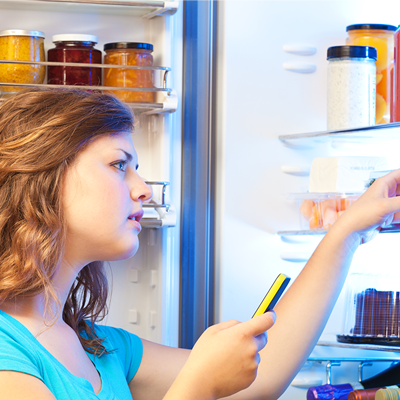
Meredith Carothers, MPH, is a Technical Information Specialist at the Food Safety Inspection Service of the United States Department of Agriculture (USDA).
Sometimes, food recalls can be confusing. What happens if you learn about a food recall on the news and realize it’s a product you have in your pantry, refrigerator, or freezer? What if you already ate it? What do you do now?
What if you already ate it? What do you do now?
Because cancer and its treatments can weaken your immune system, you and your caregivers should be especially careful when handling a recalled food product that could potentially make you sick. A product can be recalled due to:
-
Contamination with harmful bacteria or other pathogens that cause illness
-
Contamination with a foreign material
-
Incorrect labelling
-
Undeclared allergens
If you’re concerned about a specific food product recall, take these 4 steps:
-
1. Determine if you have the recalled food product in your home
Food recalls are very precise. A recall applies only to a specific product produced during a specific time period. You may have a different product by the same manufacturer, or you may have the same product in a different size or with a different sell-by date. But if you don’t have the exact product, it’s not part of the recall. To be sure, check the recall announcements on the U.S. Centers for Disease Control and Prevention (CDC) website. You can also report food poisoning or a problem with food at the U.S Department of Agriculture website.
-
2. Identify the reason for the recall
Food products are recalled for many reasons. Some may affect you more than others. For example, if a product is recalled because its label doesn’t indicate that it contains an allergen, such as wheat or soy, only people allergic to that allergen are at risk.
If a product is recalled because it may contain a foreign object or harmful bacteria, you should no longer eat it or handle it. If you already have and didn’t find the object, you don’t need to worry. However, if the reason was harmful bacteria, be alert for food poisoning symptoms, such as nausea, vomiting, and diarrhea. If you think you may have gotten sick from eating a recalled food, contact your doctor immediately.
-
3. Return the recalled food product
If you still have the recalled food product, it’s important to throw it out or take it back to the store. Do not eat it. The store will return it to the manufacturer or destroy the product. If the recall is bacteria-related, ask someone else to toss or return the product for you so you don’t need to handle it. If you do handle the product, wash your hands thoroughly with warm water and soap for 20 seconds.
-
4. Clean your kitchen
Whether or not you prepared a product recalled due to a food pathogen, such as salmonella or E. coli, it’s good to know how to properly clean your kitchen. Wash all cookware, utensils and cutting boards with hot, soapy water. Clear off your counters and wash them with hot, soapy water as well. Then wipe them down with a diluted bleach solution—1 tablespoon of liquid chlorine bleach to 1 gallon of water—and let them air dry. You can also use this sanitizing solution to rinse dishes, cookware, and cutting boards.
Need more food safety information? Call the USDA Meat & Poultry Hotline at 1-888-MPHOTLINE (1-888-674-6854) or email mphotline.fsis@usda.gov. You can also chat live with a USDA food safety specialist at AskKaren.gov, available from 10 a.m. to 6 p.m. Eastern Time, Monday through Friday, in English or Spanish.
